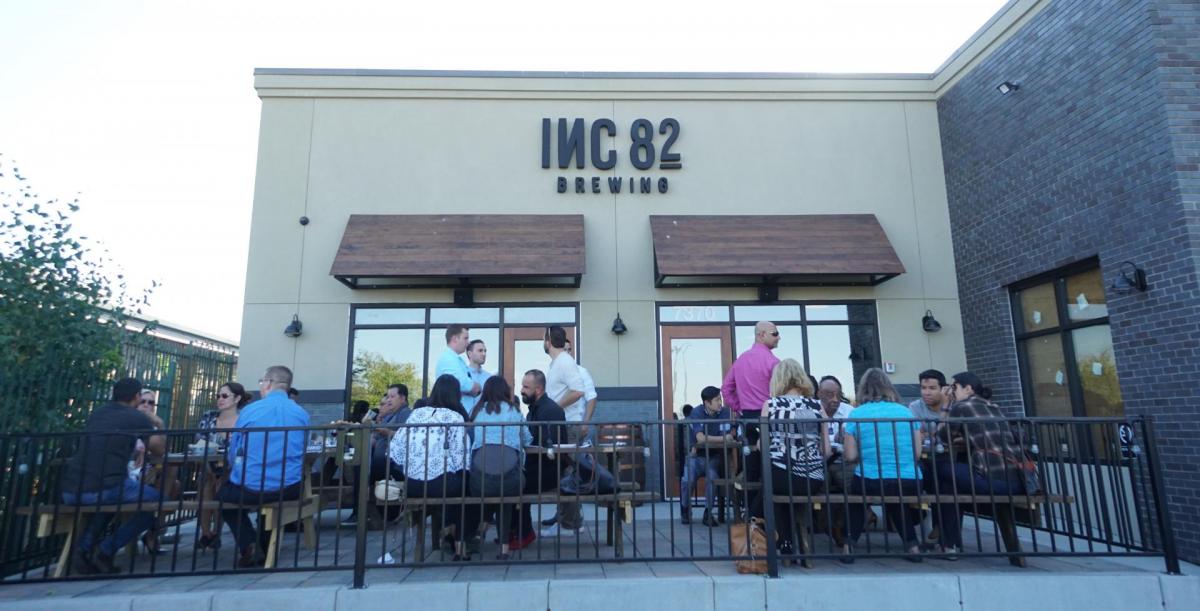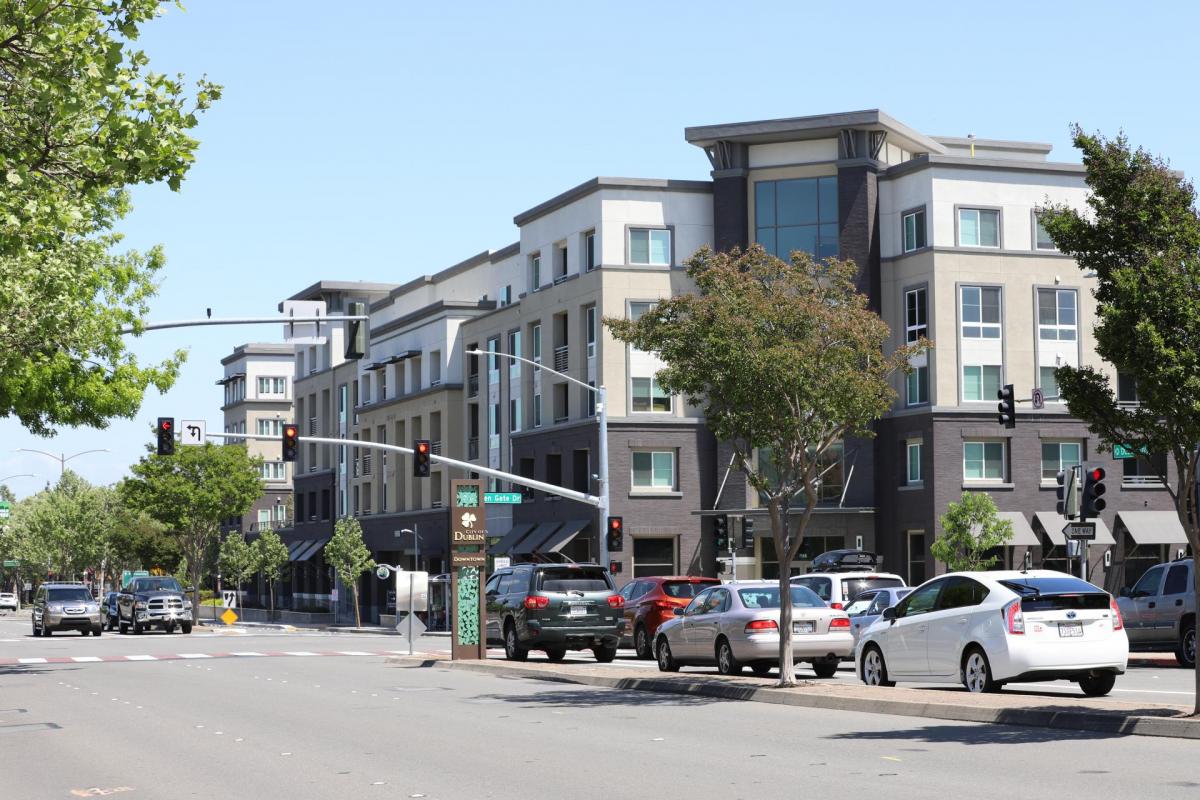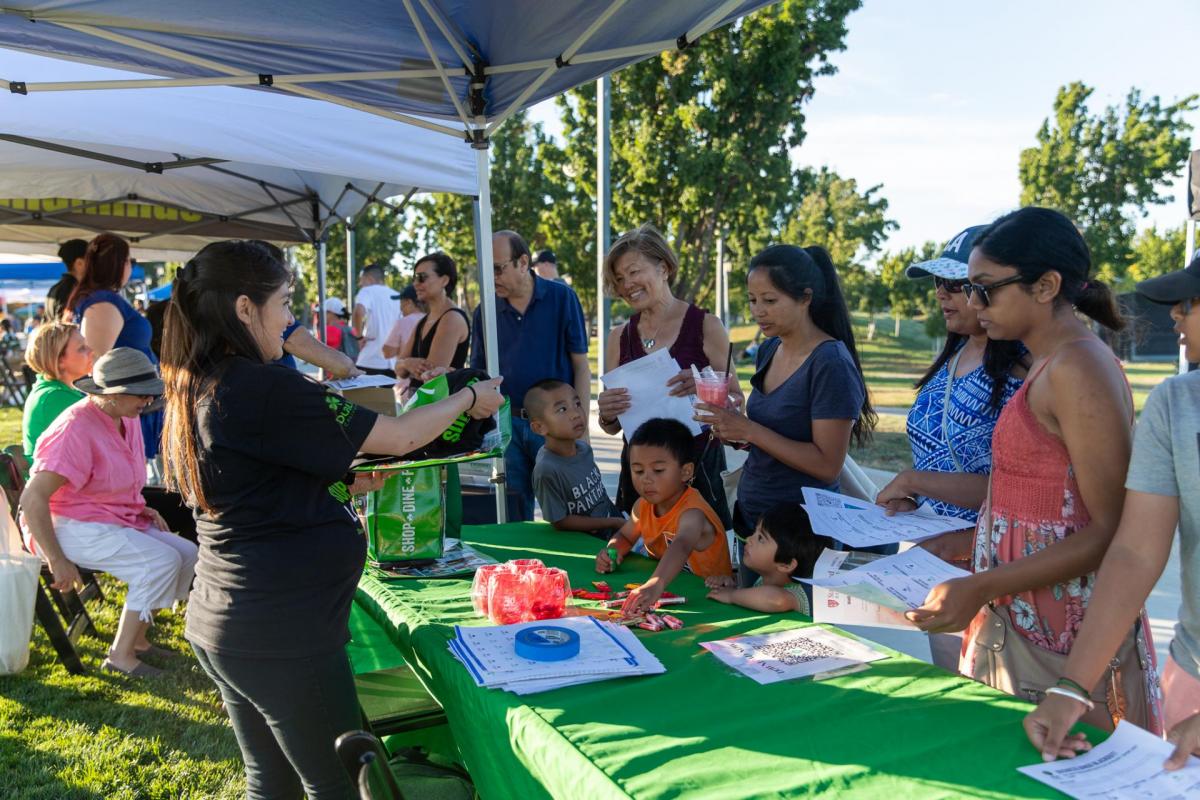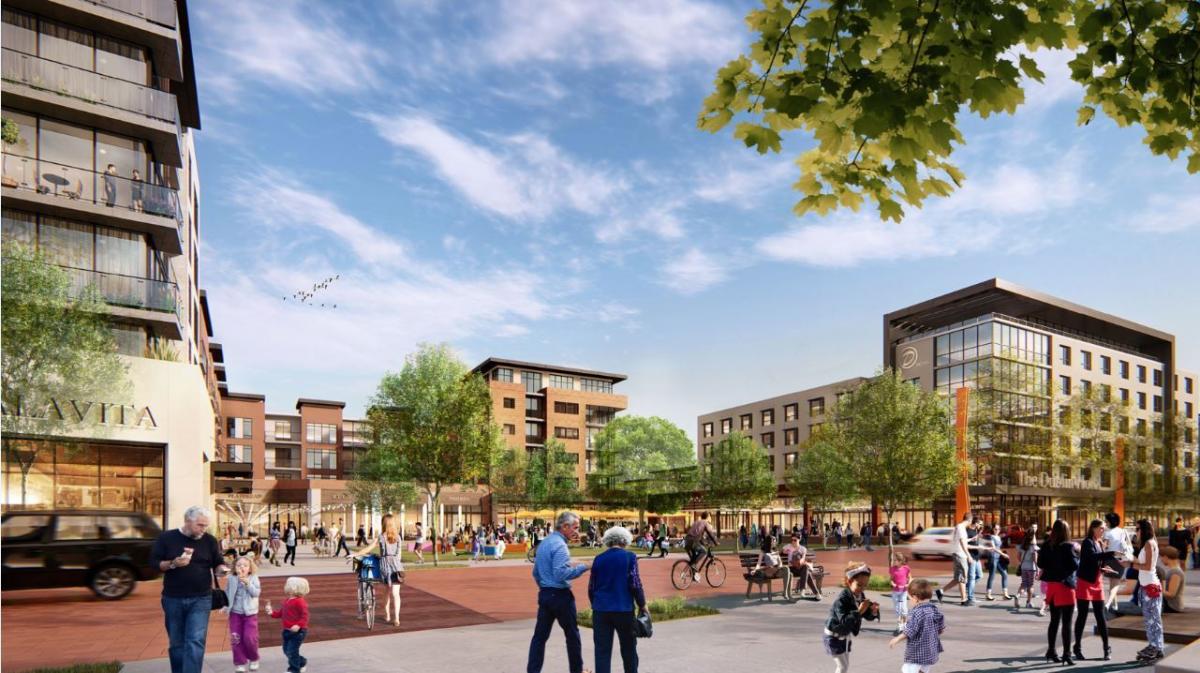Small business support keeps Dublin’s economy humming
Brian Lee-Mounger Hendershot is the managing editor for Western City magazine; he can be reached at bhendershot@calcities.org.
If you’re looking for the best ways to support local businesses, travel east of San Francisco to Dublin (pop. 72,060). The city has been one of the fastest growing communities in the U.S. for several consecutive years.
Dublin was incorporated in 1982. Like many former unincorporated communities, this has created some longstanding challenges. A promised railroad stop skipped the city, so it never organically developed a walkable downtown. Dublin is also a long, lean community surrounded by other cities, Interstate 580, Interstate 680, and miles of parks.
Yet what some see as a challenge, others see as an opportunity.
According to a former mayor, Tim Sbranti, the city used its parkland-adjacent location to encourage sports, outdoor events, and other physically active businesses. Notable examples include an aquatic center, two minor league sports teams — with hopefully more in the future — a large bowling center, and an ice rink.
But there’s more to Dublin than festivals and the great outdoors. The town has also seen a spike in new restaurant openings. For business leaders and city officials though, the best might be yet to come.
“There are many emerging and exciting trends in Dublin, with the redevelopment of its downtown core chief among them,” said Sbranti, who now serves on Innovation Tri-Valley Leadership Group as the director of strategic initiatives. The organization works across sectors to attract new businesses and workers, as well as expand existing businesses.
If you call, you’re going to get a warm body
Two ingredients are usually needed for strong and sustained economic growth at the local level: housing and partnerships. Dublin has both.
From 2010 to 2020, the city permitted nearly four times the number of housing permits than San Francisco, following through on ambitious plans from years prior. Two BART rail stations made those plans easier, which the city used to encourage transit-oriented development. Dublin also sits at the crossroads of two interstates, making it an ideal location for many businesses.
As for the partnerships, Dublin has those in spades too. Dublin works with other cities in the area to advocate for funding and policies at the state and federal levels. But just as importantly, the city prioritizes partnerships with business owners — especially smaller ones.
City staff proactively helps people navigate different agencies’ permitting requirements and provides matching grants for upgrades, such as trash enclosures or fire sprinklers.
Dublin is a majority-minority city, so most staff speak multiple languages. Dublin contracts with a language consultant for additional services. This helps ensure that any member of the city’s diverse community understands the steps they need to take to open a business.
The city was also an early adopter of a texting-based outreach program. It’s a point of pride for Dublin that it’s never used an automated response system and that people can reach staff in a way that works best for them.
“If you call, you’re going to get a warm body,” said Hazel Wetherford, the deputy city manager. “You’re going to get a call back from an economic development team within 24 hours.”
It’s no surprise then that the number of new restaurants that opened in 2022 increased by 340%. Even as old businesses closed due to rising costs or lowered demand, new ones opened at a steady rate.
Katie Marcel, CEO of Innovation Tri-Valley Leadership Group, cites several contributing factors: the city’s Business Concierge program, flexible zoning policies, economic incentives, and outreach strategies.
“They have been particularly proactive working with landowners, commercial brokers, and community stakeholders to create a vision for vacant and/or under-utilized properties, upzone the sites to get them ready for development, and then driving and expediting the process to see projects come to fruition,” Marcel said.
For Wetherford and her team, the key is to work backward. They start with an open date, figure out which approvals are needed, and then start calling relevant agencies. For mom-and-pop shops in particular — of which there are many — this is key.
“Having to talk to fire, having to talk to public works, having to talk to planning, and building and understand the building permit process can be a daunting task,” Wetherford said. “If you’re not in that environment every day, it can become a challenge.”
Of course, things do not always go to plan. In one instance, someone opened a restaurant without the required health and environmental permits. After learning about it on social media, city staff met the owners on-site, made the necessary phone calls, and expedited as much of the process as possible. The owners were able to reopen in under a month.
Economic activity powers local vibrancy
Dublin still has plenty of challenges. The cost of housing is high, making it difficult for smaller businesses to attract and keep talent. There’s also a lack of space for light industrial/advanced manufacturing. The Bay Area has seen a boom in life science, biotech, robotics, automation, and medical tech — things the city needs to attract to stay competitive.
Wetherford knows there’s demand for those spaces because she gets calls about them. To that end, the city is working to extend a major boulevard into a nearby city. That would allow Dublin to develop one of its few remaining vacant parcels of land identified as an economic development zone. The development of this area would bring in an estimated 11,920 jobs to the community.
The city is also hoping to build a pedestrian-friendly downtown. The proposed downtown development would include a town square, ground-floor commercial spaces, restaurants, entertainment venues, and roughly 1,000 life science jobs.
“This new pedestrian-friendly and walkable downtown will serve as the living room to our community,” said Wetherford.
Judging by the number of permits the city received last year, 2024 should be another good year — even if the downtown project is still a few years away. The city received over 250 business license applications, including 116 for commercial businesses. For Wetherford, when businesses succeed, the whole community rises. Their success helps fund new parks, infrastructure, police officers, and affordable housing.
“Economic developers pour into these businesses in hopes that these businesses are successful, and then they can add to the social fabric of our community,” she said. “It’s a continuous cycle that feeds the city’s economic engine.”




